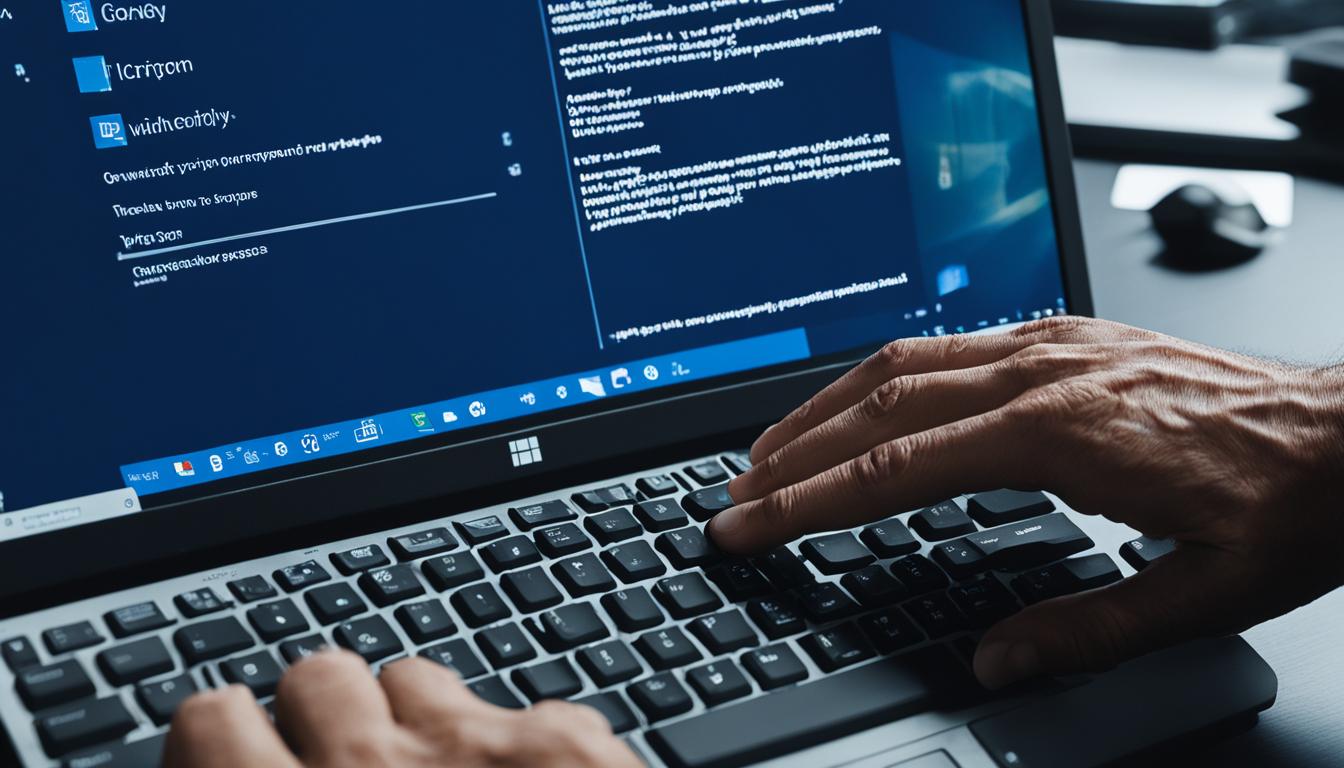Contents
- 1 Why is my keyboard not working in Windows 10?
- 2 Fixing your keyboard in Windows 10
- 3 Prerequisite: Turn on the on-screen keyboard
- 4 Method 1: Use the Windows + Space bar keyboard shortcut
- 5 Method 2: Turn off the Filter Keys feature
- 6 Method 3: Uncheck the “Allow the computer to turn off this device to save power” option
- 7 Method 4: Use the Windows 10 Keyboard troubleshooter
- 8 Method 5: Disable Fast Startup
- 9 Method 6: Update your drivers
- 10 Conclusion
- 11 FAQ
- 11.1 Why is my keyboard not working in Windows 10?
- 11.2 How do I turn on the on-screen keyboard in Windows 10?
- 11.3 What is the Windows + Space bar keyboard shortcut for?
- 11.4 How do I turn off the Filter Keys feature in Windows 10?
- 11.5 How do I disable the power-saving option for my USB port in Windows 10?
- 11.6 How do I run the Windows 10 Keyboard troubleshooter?
- 11.7 How do I disable Fast Startup in Windows 10?
- 11.8 How do I update my keyboard drivers in Windows 10?
One of the worst things that can happen to a computer user is a keyboard issue. Keyboards are essential for inputting information, communicating, and running commands on a PC or laptop. When your keyboard stops working, it can be frustrating and limit your productivity. In this guide, I will walk you through the steps to troubleshoot and fix keyboard problems on Windows 10. We will cover common causes of keyboard issues and provide solutions to get your keyboard working again.
Key Takeaways:
- Troubleshooting keyboard issues on Windows 10 is crucial for maintaining productivity.
- There can be multiple reasons why your keyboard may not be functioning correctly.
- Methods like using keyboard shortcuts and updating drivers can help fix keyboard problems.
- Turning on the on-screen keyboard can assist in troubleshooting physical keyboard issues.
- If basic troubleshooting steps don’t work, seeking professional assistance may be necessary.
Why is my keyboard not working in Windows 10?
If you’re experiencing issues with your keyboard on Windows 10, it can be frustrating and hinder your productivity. There are several potential reasons why your keyboard may not be working correctly. Identifying the specific cause is essential for finding the right solution. Here are some common culprits:
- Physical damage to the keyboard: Accidental spills, drops, or rough handling can damage the keyboard’s internal components, leading to unresponsive keys.
- Low battery in wireless keyboards: If you’re using a wireless keyboard, low battery power can cause intermittent or complete keyboard failure.
- Missing or outdated keyboard drivers: Outdated or missing keyboard drivers can prevent proper communication between your keyboard and Windows 10.
- Incompatible USB port: If you’re using a USB keyboard, connecting it to an incompatible USB port may result in malfunctioning keys.
- Improperly configured power settings: Power-saving settings may affect your keyboard’s functionality and cause it to stop responding intermittently.
- Bug in Windows 10’s Filter Key feature: The Filter Key feature, designed to ignore repeated keystrokes, can sometimes interfere with normal keyboard operation.
- Recent Windows 10 update: A recent update may have introduced compatibility issues between Windows 10 and your keyboard.
To address the specific issue you’re facing, let’s explore troubleshooting methods in the upcoming sections. Understanding the cause is the first step toward resolving the problem and getting your keyboard back to full functionality.
| Common Causes | Solutions |
|---|---|
| Physical damage to the keyboard | Repair or replace the keyboard |
| Low battery in wireless keyboards | Replace or recharge the batteries |
| Missing or outdated keyboard drivers | Update or reinstall the drivers |
| Incompatible USB port | Connect the keyboard to a compatible USB port |
| Improperly configured power settings | Adjust power-saving settings to allow full keyboard functionality |
| Bug in Windows 10’s Filter Key feature | Disable the Filter Key feature |
| Recent Windows 10 update | Roll back or update Windows 10 to resolve compatibility issues |
Fixing your keyboard in Windows 10
Now that we understand the possible causes of keyboard issues, let’s explore the solutions to fix them on Windows 10. In this section, I will walk you through several methods to troubleshoot and resolve keyboard problems. These methods include using keyboard shortcuts, disabling the Filter Keys feature, adjusting power settings, running the Windows 10 Keyboard troubleshooter, and updating your keyboard drivers. By following these steps, you can restore your keyboard functionality on Windows 10.
Method 1: Using Keyboard Shortcuts
If your keyboard is not typing on Windows 10, keyboard shortcuts can sometimes provide a quick fix. Press the Windows + Space bar keys simultaneously. Many users have reported that their keyboard started working again after trying this shortcut. It can help resolve minor glitches or software conflicts that may be causing your keyboard to stop responding.
Method 2: Disabling the Filter Keys Feature
The Filter Keys feature in Windows 10 can sometimes cause issues with keyboard functionality. To turn off Filter Keys, open the Control Panel by pressing the Windows + R keys, type in “control,” and click OK. Make sure the view mode is set to Category, click on the “Ease of Access” heading, select “Change how your keyboard works,” and ensure that the checkbox next to “Turn on Filter Keys” is empty. Apply the changes and test if your keyboard works properly.
Method 3: Adjusting Power Settings
Improperly configured power settings can interfere with the recognition of your keyboard. To fix this, open the Device Manager by pressing the Windows + X keys, expand the Universal Serial Bus controllers menu, double-click on the USB port your keyboard is connected to, navigate to the Power Management tab, uncheck the box next to “Allow the computer to turn off this device to save power,” and restart your device. Check if your keyboard issues persist.
Method 4: Running the Windows 10 Keyboard Troubleshooter
Windows 10 includes a built-in troubleshooter specifically designed to detect and fix keyboard-related errors. To run the keyboard troubleshooter, go to the Windows icon in your taskbar, click on Settings, search for “Fix keyboard,” select “Find and fix keyboard problems,” and follow the on-screen instructions. The troubleshooter will scan for any issues and attempt to resolve them automatically.
Method 5: Updating Your Keyboard Drivers
Outdated or missing keyboard drivers can cause various issues with keyboard functionality. To update your keyboard drivers, open the Device Manager, expand the Keyboards menu, right-click on your keyboard, choose Update Driver, allow Windows 10 to search for the latest driver online or on your computer, and follow any on-screen instructions. Keeping your drivers up to date can help resolve compatibility issues and ensure the proper functioning of your keyboard.
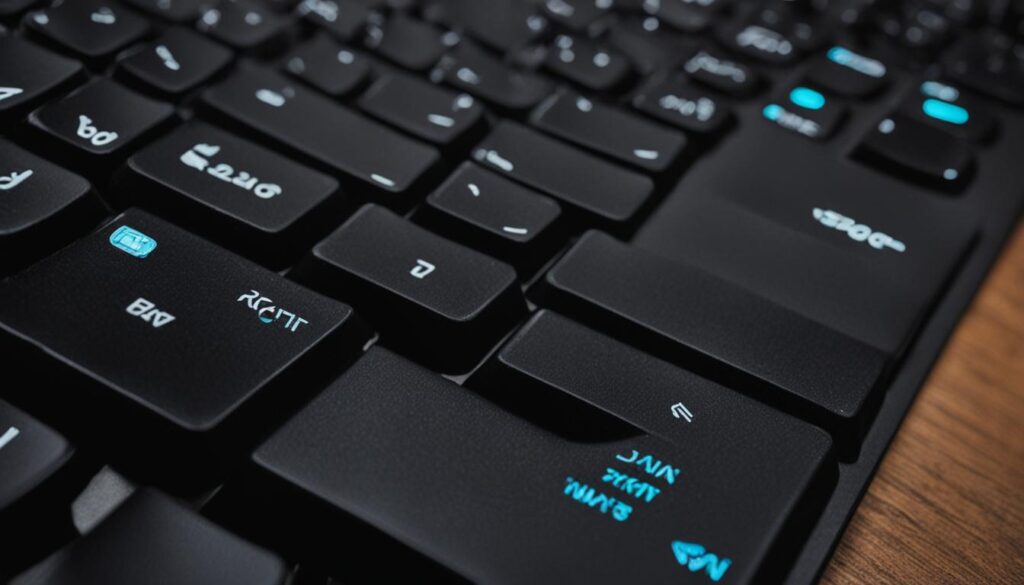
By following these troubleshooting methods, you can resolve keyboard issues on Windows 10 and get your keyboard back to working condition. If none of these methods solve your problem, it may be necessary to seek professional assistance or contact the manufacturer of your device for further support.
Prerequisite: Turn on the on-screen keyboard
Before troubleshooting your keyboard, it’s helpful to turn on the on-screen keyboard in Windows 10. This will allow you to follow instructions and perform tasks even if your physical keyboard is not functioning properly. Here’s how:
- Click on the Windows icon in your taskbar to open the Start menu.
- Click on “Settings”.
- In the Settings menu, select the “Ease of Access” tile.
- Scroll down in the left-side panel and click on “Keyboard” listed under the Interaction section.
- Toggle on the “Use the On-Screen Keyboard” option.
By enabling the on-screen keyboard, you can access the virtual keyboard on your screen and continue using your computer even if your physical keyboard is not functioning properly.
It’s worth noting that the on-screen keyboard can be controlled with a mouse or other input device, making it an essential tool for individuals with accessibility needs or those experiencing keyboard issues.
Method 1: Use the Windows + Space bar keyboard shortcut
If you’re experiencing keyboard issues on your Windows 10 device, there’s a simple trick that may help resolve the problem. Try using the Windows + Space bar keyboard shortcut. Press these two keys simultaneously, and you may find that your keyboard starts working again.
This shortcut has been reported by many users to fix minor glitches or software conflicts that can cause keyboards to stop responding. By pressing Windows and the Space bar together, you can potentially overcome these issues and restore your keyboard’s functionality.
“The Windows + Space bar keyboard shortcut is a lifesaver! My keyboard suddenly stopped working, and this quick fix did the trick. It’s so simple yet effective.” – Emily
To use the Windows + Space bar keyboard shortcut, make sure you press both keys at the same time. This combination can help trigger a reset or reactivation of your keyboard, resolving any temporary hiccups in its functionality.
Try the Windows + Space bar keyboard shortcut if your keyboard is not working correctly. It may quickly resolve the issue and save you time and frustration.
Method 2: Turn off the Filter Keys feature
The Filter Keys feature in Windows 10 can sometimes cause issues with keyboard functionality. To turn off Filter Keys, follow the steps below:
- Open the Control Panel by pressing the Windows + R keys.
- Type in “control” and click OK.
- Make sure the view mode is set to Category.
- Click on the Ease of Access heading.
- Select “Change how your keyboard works.”
- Ensure that the checkbox next to “Turn on Filter Keys” is empty.
- Apply the changes.
After completing these steps, test if your keyboard works properly. Disabling the Filter Keys feature can help resolve issues that may be causing your keyboard to not work as expected.
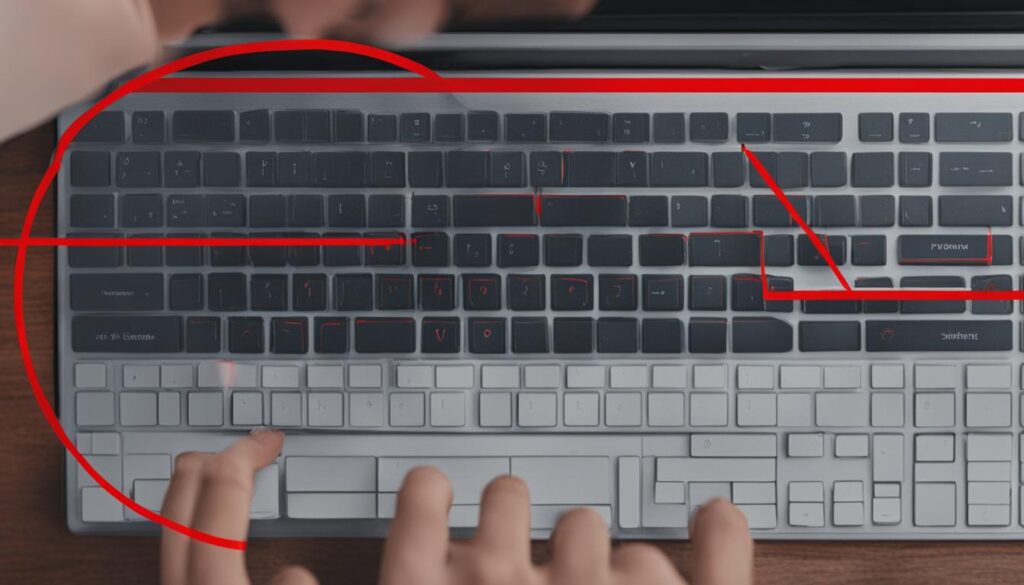
Note that the image above is for illustrative purposes and may not accurately depict the specific steps outlined here.
Method 3: Uncheck the “Allow the computer to turn off this device to save power” option
If your keyboard is connected via USB, power-saving settings may be causing intermittent disconnects. To resolve this issue, follow these steps:
- Open the Device Manager by pressing the Windows + X keys.
- Expand the Universal Serial Bus controllers menu.
- Double-click on the USB port your keyboard is connected to.
- Navigate to the Power Management tab.
- Uncheck the box next to “Allow the computer to turn off this device to save power.”
- Restart your device to apply the changes.
Checking if the keyboard issues persist after restarting your device. If the problem persists, move on to the next troubleshooting method.
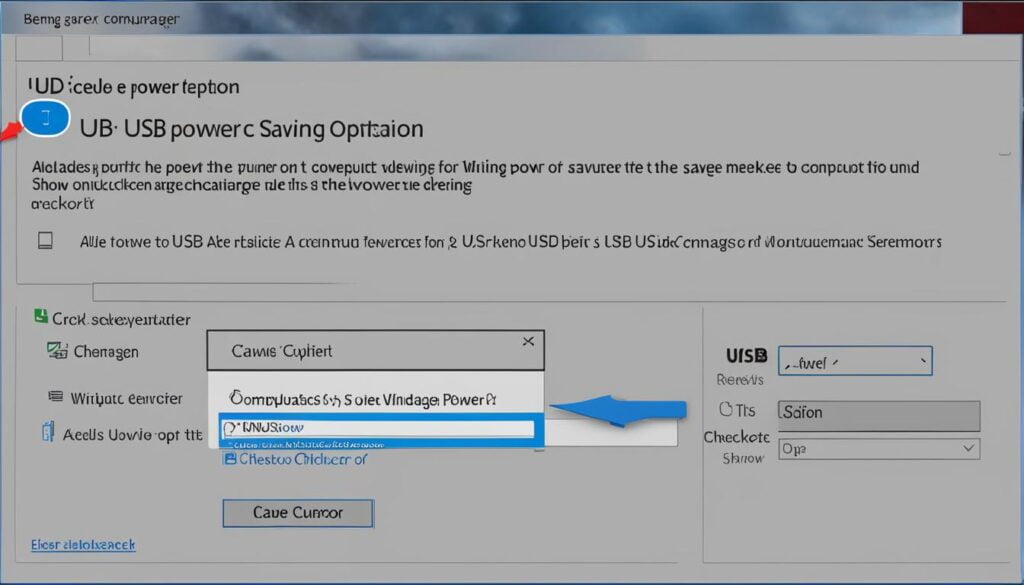
Method 4: Use the Windows 10 Keyboard troubleshooter
When facing keyboard-related errors on Windows 10, the built-in Keyboard troubleshooter can be a handy tool to find and fix the issue. To run the troubleshooter and resolve keyboard problems, follow these steps:
- Click on the Windows icon located in your taskbar to open the Start menu.
- Select “Settings” from the list of options.
- In the Settings window, type “Fix keyboard” in the search bar at the top.
- From the search results, choose “Find and fix keyboard problems.”
- Follow the on-screen instructions provided by the troubleshooter.
The Keyboard troubleshooter will scan your system for any keyboard-related issues and attempt to resolve them automatically. If the troubleshooter detects any problems, it will provide detailed information and guide you through the necessary steps to fix your keyboard.
Using the Windows 10 Keyboard troubleshooter can save you time and effort by quickly identifying and resolving common keyboard problems. Try running the troubleshooter if you are experiencing issues with your keyboard on Windows 10.
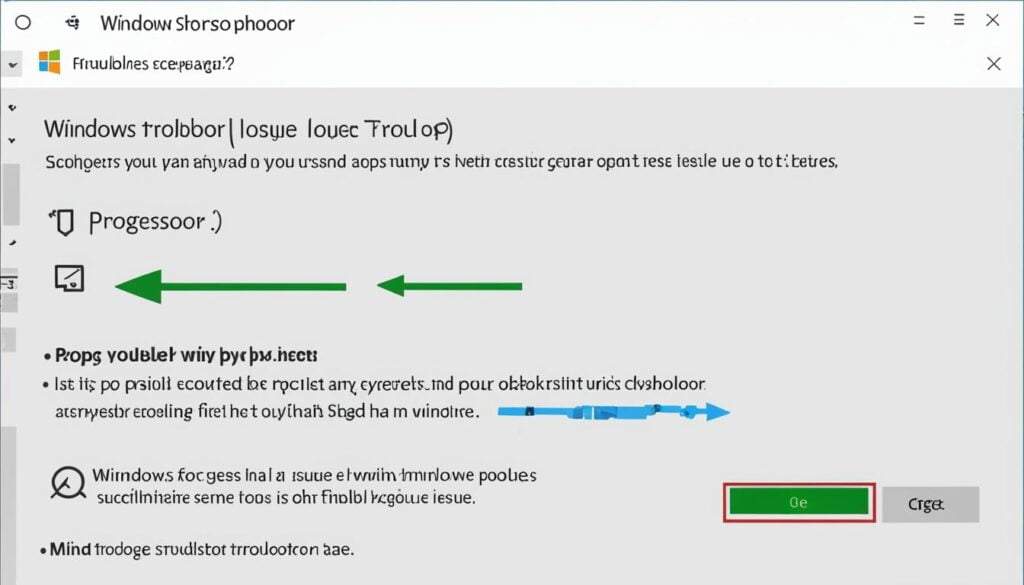
Example Troubleshooter Results
| Issue | Status | Action |
|---|---|---|
| Keyboard not recognized | Detected | Install the latest keyboard driver |
| Keys not responding | Not detected | Check keyboard connections and replace if necessary |
| Incorrect character input | Detected | Adjust keyboard language settings |
The Windows 10 Keyboard troubleshooter is a valuable tool for diagnosing and fixing keyboard-related errors on your system. By following its recommendations, you can restore your keyboard’s functionality and improve your overall user experience.
Method 5: Disable Fast Startup
One common cause of keyboard issues in Windows 10 is the Fast Startup feature. While this feature aims to reduce boot time, it can sometimes interfere with the functionality of connected peripherals, including keyboards.
To disable Fast Startup and potentially fix your keyboard problem, follow these steps:
- Open the Control Panel.
- Click on the Hardware and Sound heading.
- Select Power Options.
- Click on “Choose what the power buttons do”.
- Click on the “Change settings that are currently unavailable” link.
- Uncheck the “Turn on fast startup” option.
- Save the changes.
- Restart your device.
After restarting, test your keyboard to see if it’s working properly again.
If disabling Fast Startup doesn’t resolve the keyboard issue, don’t worry. There are other methods you can try to troubleshoot and fix the problem.
Method 6: Update your drivers
If your keyboard drivers are outdated or missing, it can cause various issues with keyboard functionality. To update your keyboard drivers, follow these steps:
- Open the Device Manager.
- Expand the Keyboards menu.
- Right-click on your keyboard.
- Choose Update Driver.
- Allow Windows 10 to search for the latest driver online or on your computer.
- Follow any on-screen instructions.
Updating your drivers can help resolve compatibility issues and ensure your keyboard functions properly.
| Pros | Cons |
|---|---|
| May resolve keyboard issues caused by Fast Startup | Disabling Fast Startup may slightly increase boot time |
| Simple and straightforward process | May not fix keyboard issues caused by other factors |
Method 6: Update your drivers
Outdated or missing keyboard drivers can cause various issues with keyboard functionality. To ensure that your keyboard is working properly, it is important to keep your drivers up to date.
To update your keyboard drivers, follow these steps:
- Open the Device Manager by pressing the Windows + X keys.
- In the Device Manager window, expand the Keyboards menu.
- Right-click on your keyboard and choose Update Driver.
- Select the option to allow Windows 10 to search for the latest driver online or on your computer.
- Follow any on-screen instructions provided to complete the driver update process.
Updating your keyboard drivers can help resolve compatibility issues and ensure the proper functioning of your keyboard, fixing any problems caused by outdated drivers.
Remember to regularly check for driver updates to keep your keyboard and other peripherals working smoothly.
| Benefits of Updating Keyboard Drivers | Steps to Update Keyboard Drivers |
|---|---|
|
|
Conclusion
Resolving keyboard issues on Windows 10 can be frustrating, but it’s not an insurmountable problem. In this guide, I have provided a comprehensive overview of common causes of keyboard problems and offered practical solutions to fix them.
By following the troubleshooting steps outlined in this guide, including using keyboard shortcuts, adjusting settings, running the Windows 10 Keyboard troubleshooter, and updating drivers, you can often resolve keyboard issues and regain full functionality.
Remember, it’s important to try these solutions sequentially and test your keyboard after each step to pinpoint the specific method that works for you. If you’re still experiencing persistent keyboard problems, it may be necessary to seek professional assistance or contact the manufacturer of your device for further support.
Don’t let keyboard issues hinder your productivity. Take advantage of the troubleshooting techniques provided in this guide and keep your keyboard working effectively on Windows 10.
FAQ
Why is my keyboard not working in Windows 10?
There can be multiple reasons why your keyboard is not working in Windows 10. Some common causes include physical damage to the keyboard, low battery in wireless keyboards, missing or outdated keyboard drivers, using an incompatible USB port, improperly configured power settings, a bug in Windows 10’s Filter Key feature, or a recent Windows 10 update.
How do I turn on the on-screen keyboard in Windows 10?
To turn on the on-screen keyboard in Windows 10, go to the Windows icon, click on Settings, choose the Ease of Access tile, scroll down in the left-side panel, click on Keyboard listed under the Interaction section, and toggle on the “Use the On-Screen Keyboard” option.
What is the Windows + Space bar keyboard shortcut for?
The Windows + Space bar keyboard shortcut can help resolve minor glitches or software conflicts that may be causing your keyboard to stop responding.
How do I turn off the Filter Keys feature in Windows 10?
To turn off the Filter Keys feature in Windows 10, open the Control Panel, select “Change how your keyboard works,” and ensure that the checkbox next to “Turn on Filter Keys” is empty.
How do I disable the power-saving option for my USB port in Windows 10?
To disable the power-saving option for your USB port in Windows 10, open the Device Manager, navigate to the Power Management tab of your keyboard’s USB port, uncheck the box next to “Allow the computer to turn off this device to save power,” and restart your device.
How do I run the Windows 10 Keyboard troubleshooter?
To run the Windows 10 Keyboard troubleshooter, go to the Windows icon in your taskbar, click on Settings, search for “Fix keyboard,” select “Find and fix keyboard problems,” and follow the on-screen instructions.
How do I disable Fast Startup in Windows 10?
To disable Fast Startup in Windows 10, open the Control Panel, select Power Options, click on “Choose what the power buttons do,” click on the “Change settings that are currently unavailable” link, uncheck the “Turn on fast startup” option, and save the changes.
How do I update my keyboard drivers in Windows 10?
To update your keyboard drivers in Windows 10, open the Device Manager, expand the Keyboards menu, right-click on your keyboard, choose Update Driver, allow Windows 10 to search for the latest driver online or on your computer, and follow any on-screen instructions.
